The 50 best comic-book movie villains of all time – ranking the best of the worst
From Mystique and Magneto to Ma-Ma and Mysterio, these are the best comic-book movie villains of all time
10. Syndrome, The Incredibles, 2004
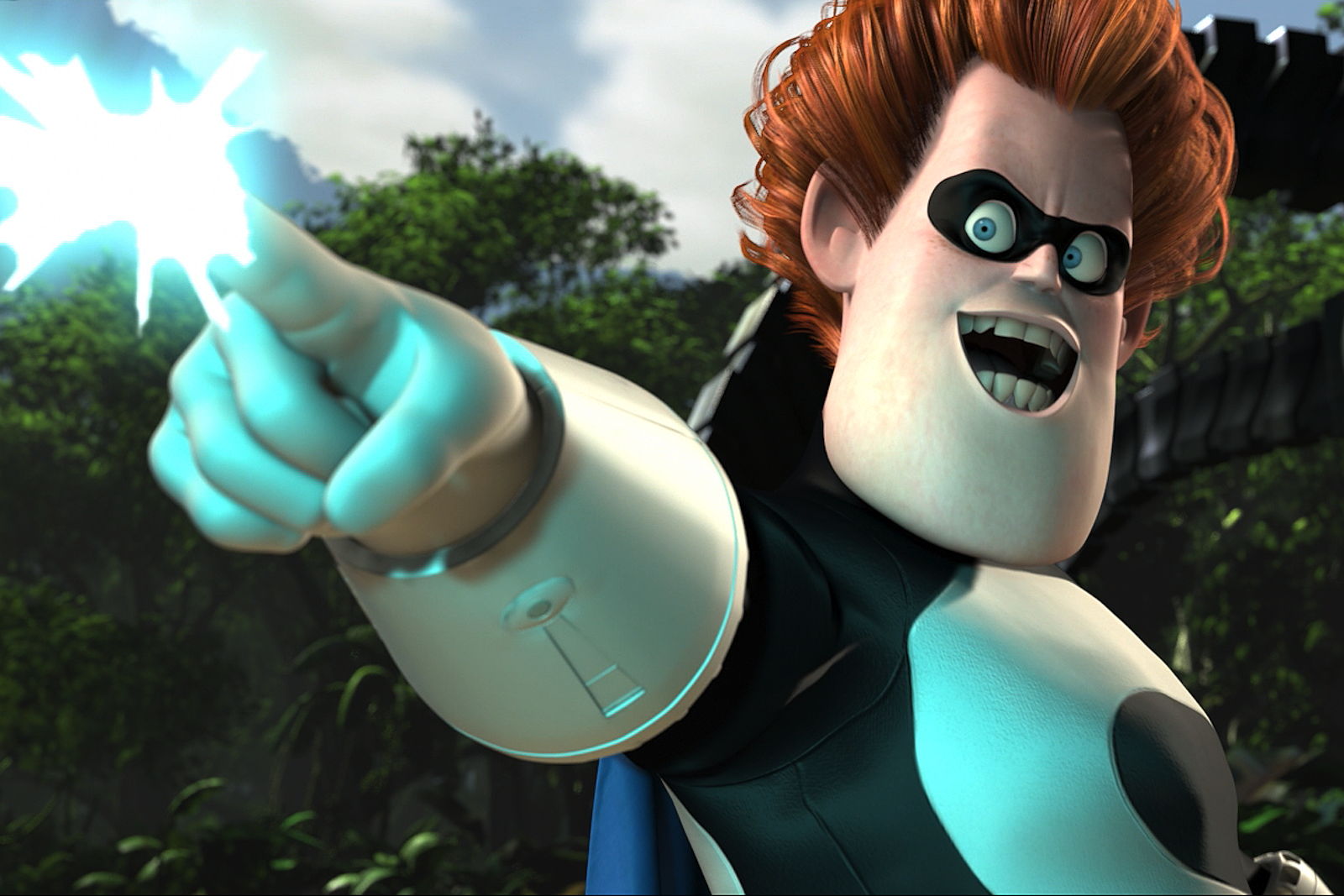
Comic origin: N/A
Played by Jason Lee (voice)
In the time since The Incredibles has opened, Syndrome has become even more pertinent given that he’s basically an entitled superfan. Lacking powers of his own, Buddy Pine finds his offer to help Mr. Incredible spurned, putting him on the path to supervillainy as Syndrome, determined to wipe out supers with the help of his Omnidroid. The animators based Syndrome’s features on writer/director Brad Bird – “When I found out Syndrome was based on me, well, you know, having the villain modelled after you? What does that say?” – and it was Jason Lee’s part in Dogma that won him the voice role. “I was kind of all over the place with the inflections and the energy, and I guess that’s what did it,” he said. A cruel and vainglorious baddie who feels genuinely dangerous, Syndrome’s absence was felt in Incredibles 2.
Most Dastardly Moment: Shooting down Elastigirl, Violet and Dash’s plane.
Killer One-Liner: “You sly dog! You got me monologuing!”
9. Lex Luthor, Superman movies, 1978-87
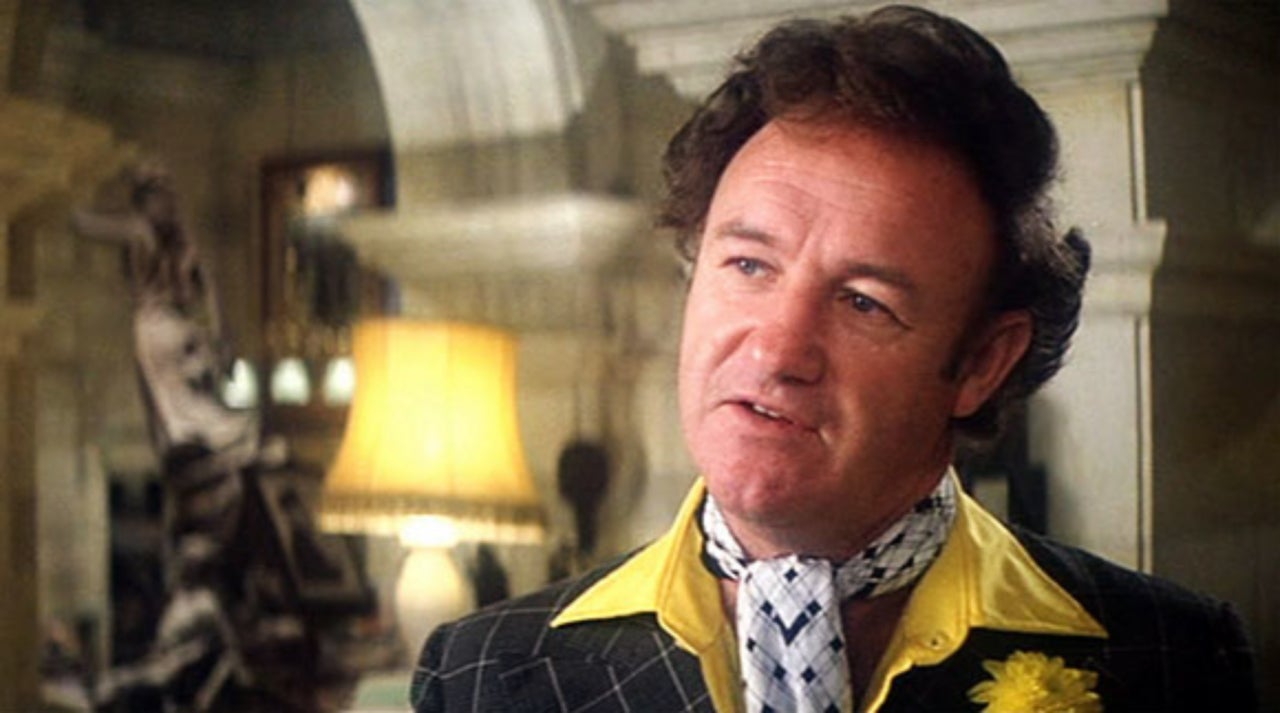
Comic origin: Action Comics #23 (1940)
Played by Gene Hackman
Sign up for the Total Film Newsletter
Bringing all the latest movie news, features, and reviews to your inbox
He’s a multi-millionaire megalomaniac. The greatest criminal mind of our time. And he really does dress up to the nines. Yes, Superman’s oldest foe Lex Luthor might not have the super-strength of, say, General Zod, but what he lacks in powers, he more than makes up for in sheer wickedness. Like a constant fly in the Man of Steel’s ointment, Luthor is never better than when he’s scheming for world domination. Of all the actors who’ve played him – Kevin Spacey and Jesse Eisenberg among them – there was no-one better suited than Gene Hackman, who steered the character across three of the four Christopher Reeve-starring Superman films. But it was in the 1978 Richard Donner-directed original that he really got to flex his criminal muscles, as Luthor plans to detonate a nuclear missile at the San Andreas Fault. Keeping the campness in check, as Hackman remarked, “You’re right on the edge all the time.”
Most Dastardly Moment: Exposing Superman to Kryptonite.
Killer One-Liner: “Neanderthal! Nitwit! Nincompoop!”
8. Mr. Glass, Unbreakable, 2000
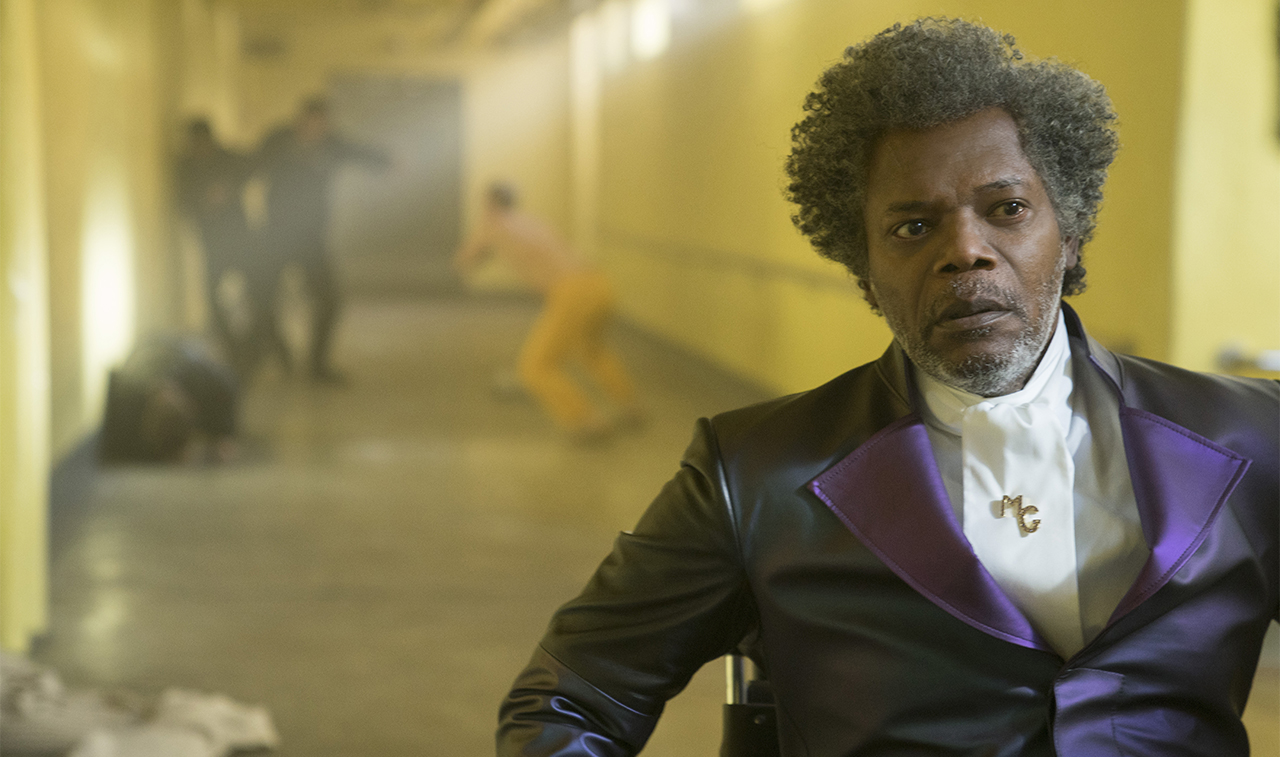
Comic origin: N/A
Played by Samuel L. Jackson
Though not based on a comic-book character, Mr. Glass (aka Elijah Price) is a product of the arch-villains he spent a third of his life studying from hospital beds, as his brittle bones healed following their latest break. Like Lex Luthor or Doctor Doom, Price’s strength is not physical, but mental – he’s the twisted brains to David Dunn’s unbreakable brawn.
Inarguably a more compelling and complex figure than his heroic counterpart, Price isn’t motivated by money, power or madness. In Unbreakable, he’s simply a lost soul desperately searching for his place in the world. Unfortunately for the population at large, the collateral damage caused by Price’s search for his indestructible opposite doesn’t weigh on his conscience – it’s a necessity, the end wholly justifying any means.
As with many of comic-book cinema’s standout supervillains, Price is a tragic figure. Born with Type I osteogenesis imperfecta, he spent his life suffering repeated physical trauma most can’t imagine. This combined with his conviction that comic books are the vestiges of superhuman historical documentation, and a dash of criminal psychosis, convinces Price that his place is at the opposite end of the ideological spectrum to Dunn.
Jackson is superb in what remains one of his most understated performances. Price’s relationship with his loving mother (Charlayne Woodard) adds an extra layer of unexpected sympathy, climaxing in Unbreakable’s skin-prickling final scene as Price confesses all to Dunn in heartbreaking fashion.
M. Night Shyamalan was clearly as enamoured with Mr. Glass as audiences, making him the titular character of his Eastrail 177 trilogy-capper Glass. But the long-anticipated sequel does the character a disservice, with Price feigning catatonia for well over half of the runtime. Only in the home stretch does he finally cut loose, but it’s too little too late, Price’s grand plan also suffering from a crippling lack of logic. But it’s not every comic-book movie that ends with the villain getting exactly what they want.
Most Dastardly Moment: Causing the Eastrail 177 derailment that killed everyone on board, including Kevin Wendell Crumb’s parents.
Killer One-Liner: “They called me Mr. Glass.”
7. Magneto, X-Men series, 2000-2019
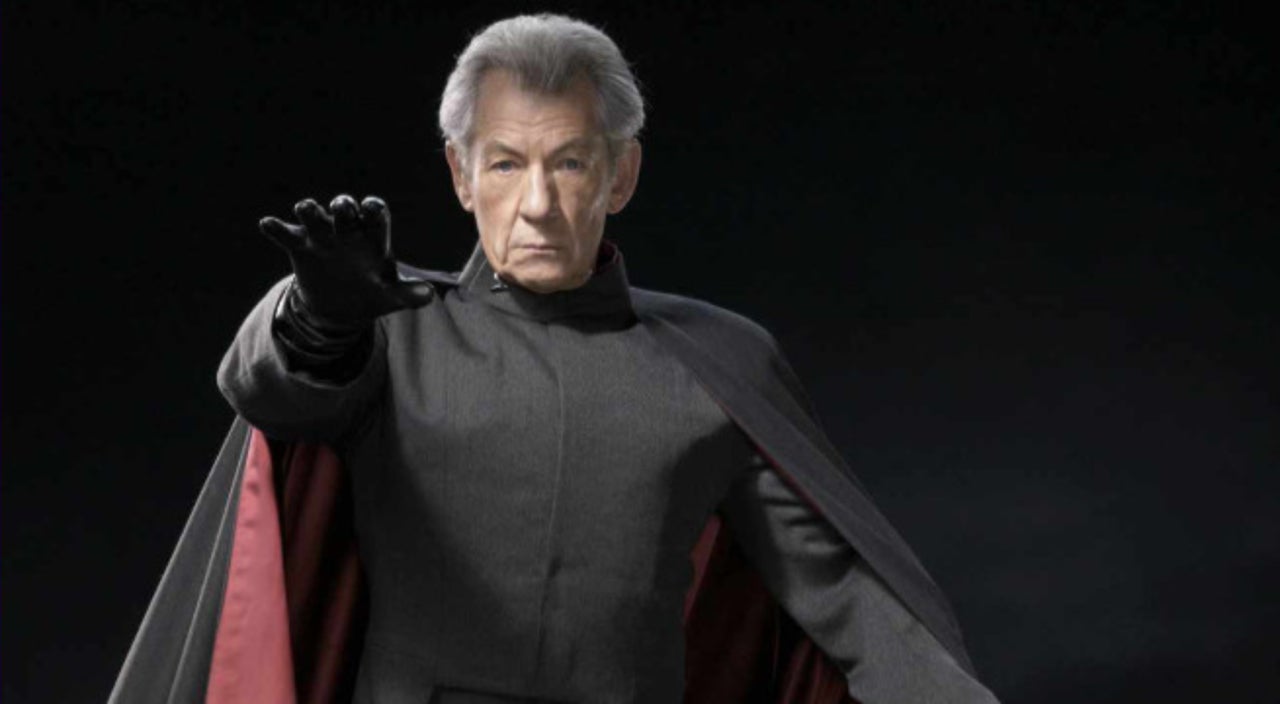
Comic origin: The X-Men #1 (1963)
Played by Ian McKellen, Michael Fassbender
“He’s political, a warrior, clearsighted, pained, anguished, determined. That’s a part really worth playing,” remarked Ian McKellen recently, recollecting the role that slingshotted him into the mainstream just three years after he’d received an Oscar nomination for Gods & Monsters. Needless to say, the then-63-year-old bore little resemblance to the muscle-bound Magneto of the comics, but when he slipped into the cape of concentration camp survivor turned mutant activist Erik Lehnsherr, McKellen owned the role tin-hat to foot.
This wasn’t a villain who cackled over hare-brained schemes, but a calm, calculating militant who was always one step ahead of the X-Men. Magneto’s plans are far-reaching and fiendishly clever, his beliefs as ironclad as you’d expect in somebody with power over metal. And whether sparring with Professor X (Patrick Stewart) over mutant rights or telling Rogue “we love what you’ve done with your hair”, McKellen gifted Magneto both a Shakespearean regality and a cattiness best observed in scenes he shared with his cobalt companion Mystique (Rebecca Romijn).
He reprised the role three more times after his debut and, by 2011, Magneto was so completely McKellen’s, it was impossible to imagine anybody else playing the part. Until Michael Fassbender portrayed a younger version of Lehnsherr in X-Men: First Class, bringing a wilder edge to the young Magneto and steering clear of impersonating his forebear (“I didn’t bother doing Ian’s voice in the first one,” he said). Instead, Fassbender uncovered new, even more complex layers, adding vital depth to the Magneto mythos. Together, he and McKellen found tantalising shades of grey in this most complex comic-book baddie.
Most Dastardly Moment: Destroying the San Francisco skyline by moving the Golden Gate Bridge.
Killer One-Liner: “Homo sapiens and their guns.”
6. Catwoman, Batman Returns, 1992
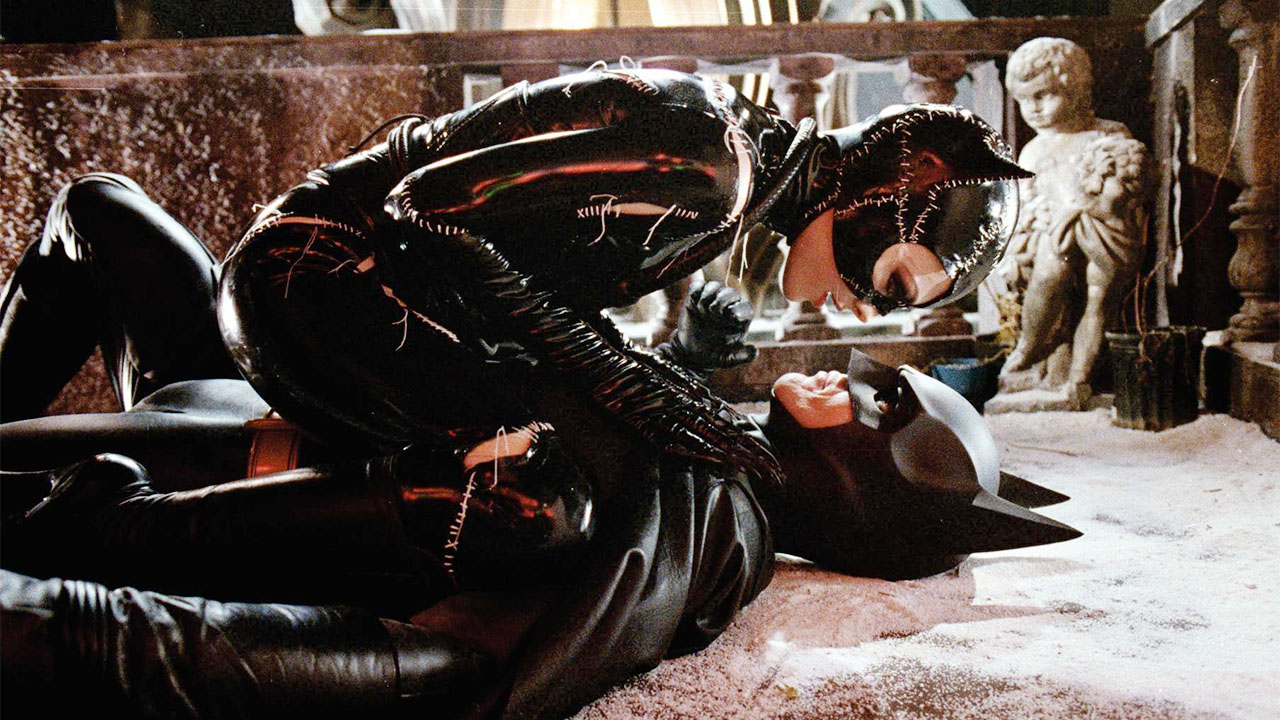
Comic origin: Batman #1 (1940)
Played by Michelle Pfeiffer
“Wait until you get a load of Michelle Pfeiffer’s ravishing kitten with a whip,” purred Rolling Stone, perhaps a little too excitedly (you can almost hear the journalist rubbing his thighs), back in 1992, when Tim Burton’s freaky-deaky sequel to his 1989 smash hit Batman arrived to stain multiplex screens dark as night.
Before Pfeiffer and her skin-tight, sewn-on latex suit, Catwoman, on page, had enjoyed a long, meandering (meow-dering?) history that went right back to the first solo Batman comic in 1940. Introduced as a mysterious burglar and jewel thief, Catwoman was created by Bill Finger and Bob Kane to both antagonise and attract Batman. The idea was to add sex appeal to our antihero’s rather sterile world while also enticing more female readers, and Catwoman soon proved herself an expert in claw-to-hand combat, a dazzling gymnast, and so adept with a bullwhip that she’d have Indiana Jones reaching for his gun.
“Cats are cool, detached and unreliable,” said Kane, who based the character on his cousin Ruth Steel and 1930s movie star Jean Harlow, who he deemed to “personify feminine pulchritude at its most sensuous”. He then went on to offer a statement that was considered a little chauvinistic then, let alone now. “Cats are as hard to understand as women are… You need to keep a woman at arm’s length. We don’t want anyone taking over our souls, and women have a habit of doing that.”
Pfeiffer’s Catwoman certainly has pulchritude to spare, along with intelligence and a wit as sharp as her claws. She begins the movie as Selina Kyle, mousy assistant to evil tycoon Max Shreck (Christopher Walken), and is soon left to die by her boss when she learns of his unholy alliance with the Penguin (Danny DeVito). Only alley cats lick her back to life and she returns with a vow of vengeance. She also decides to frame Batman along the way, but they of course fall for each other – there just aren’t that many nutjob vigilantes dressed all in black in Gotham.
“How could you, I’m a woman,” Catwoman quivers when Batman strikes her. He begins to apologise and she hits him back, hard. “As I was saying, I’m a woman and can’t be taken for granted. Life’s a bitch, now so am I.”
Pfeiffer’s Catwoman is as purr-fect as Heath Ledger’s Joker, and makes a huge impact in a movie that boasts two other bad guys played by supreme actors. Think ‘Catwoman’ and it is Pfeiffer who leaps to mind, despite the character also being played on screen, sometimes very successfully, sometimes not, by Julie Newmar, Eartha Kitt and Lee Meriwether (in the 1960s TV series and 1966’s Batman: The Movie), and by Halle Berry (the godawful Catwoman). Anne Hathaway, of course, played Selina Kyle in The Dark Knight Rises, and Camren Bicondova impresses as a young Selina in the TV series Gotham (Lili Simmons portrayed an older version of Kyle in the series finale).
Likewise, Selina/Catwoman has enjoyed at least nine different lives in the comics, fighting Batman, helping Batman and marrying Bruce Wayne (on the parallel world of Earth-Two in the ’70s comics). Not bad for a character who disappeared from DC’s comics from September 1954 to November 1966, when the Comics Code Authority considered her attributes out of whack with how women should be portrayed.
“I felt this tremendous responsibility,” said Pfeiffer in ’92 as she promoted the movie. “People were going to be really mad at me if I didn’t do a good job.” And delighted if she smashed it out the park.
Most Dastardly Moment: Back-flipping into the middle of a confrontation between the Penguin and Batman, offering a sultry “Meow!” and slipping away as a store explodes.
Killer One-Liner: “I am Catwoman. Hear me roar.”’
5. Doc Ock, Spider-Man 2, 2004
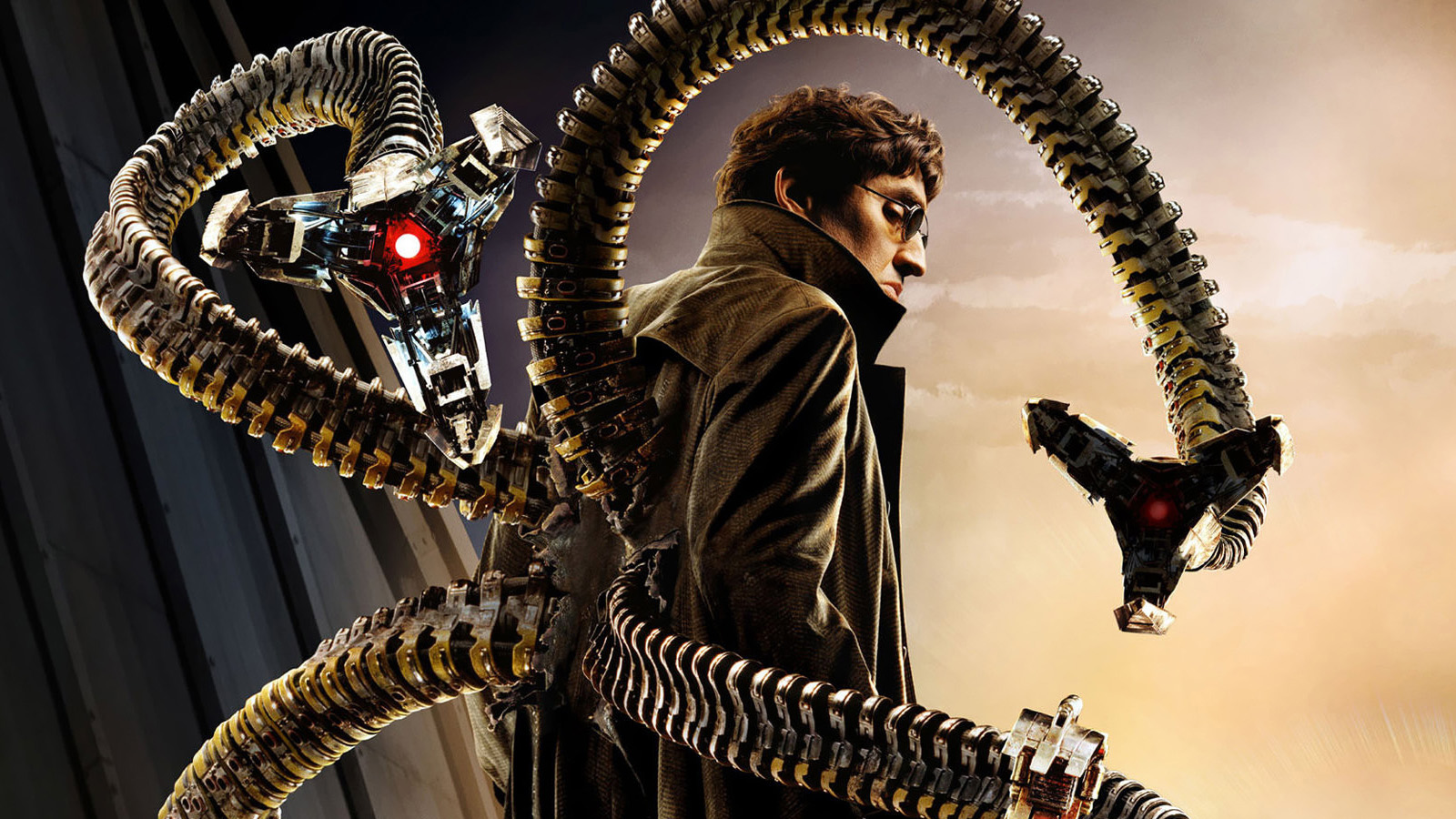
Comic origin: The Amazing Spider-Man #3 (1963)
Played by Alfred Molina
With seven films under his Spider-Belt, and a rogues’ gallery rivalled only by Batman, there’s no shortage of big-screen Spider-Man villains to choose from. But Spidey’s standout bad guy remains Dr. Otto Octavius – better known as Doc Ock – from Sam Raimi’s high-flying Spider-Man 2. The reasons are twofold: he’s one of the first, and arguably the best, examples of a truly sympathetic comic-book villain; and his tentacular AI arms are unbelievably cool.
That first element is the most important. Dr. Octavius is a good man doing important, altruistic work when we meet him. He’s someone Peter admires, possibly even aspires to be, outside of the suit. Were it not for an experiment gone wrong, which claims the life of his wife Rosalie, Dr. Octavius could have changed the world. This combined with the destruction of the inhibitor chip, which prevents Octavius’ robotic arms from directly accessing his nervous system, transforms Octavius into the psychotic Doc Ock.
Boasting an origin story almost as poignant as Spider-Man’s, Doc Ock’s creation closely echoes Peter Parker’s own hero’s journey, albeit one reflected through a cracked mirror. One scene, in which Doc Ock’s sentient limbs slay the medical professionals trying to separate the man from his killer hardware, sees Raimi slip some Evil Dead-worthy horror into a 12A, and makes it abundantly clear that Doc Ock is as dangerous as they come.
Possessing surplus limbs capable of scaling sheer walls and literally giving him eyes in the back of his head, Doc Ock is a physical match for Spider-Man, leading to arguably the single greatest set-piece in any superhero movie as Spidey and Doc Ock do battle along a hurtling subway train. Fifteen years on, it’s a sequence that still holds up. And Doc Ock’s unravelling, at the hands of a regretful Octavius, proves why Alfred Molina was such an inspired, if unlikely, choice for the comic icon.
Most Dastardly Moment: Dropping Aunt May from the a New York skyscraper. “Butterfingers” indeed.
Killer One-liner: “The power of the sun… in the palm of my hand.”
4. Loki Thor, 2011; Avengers Assemble, 2012
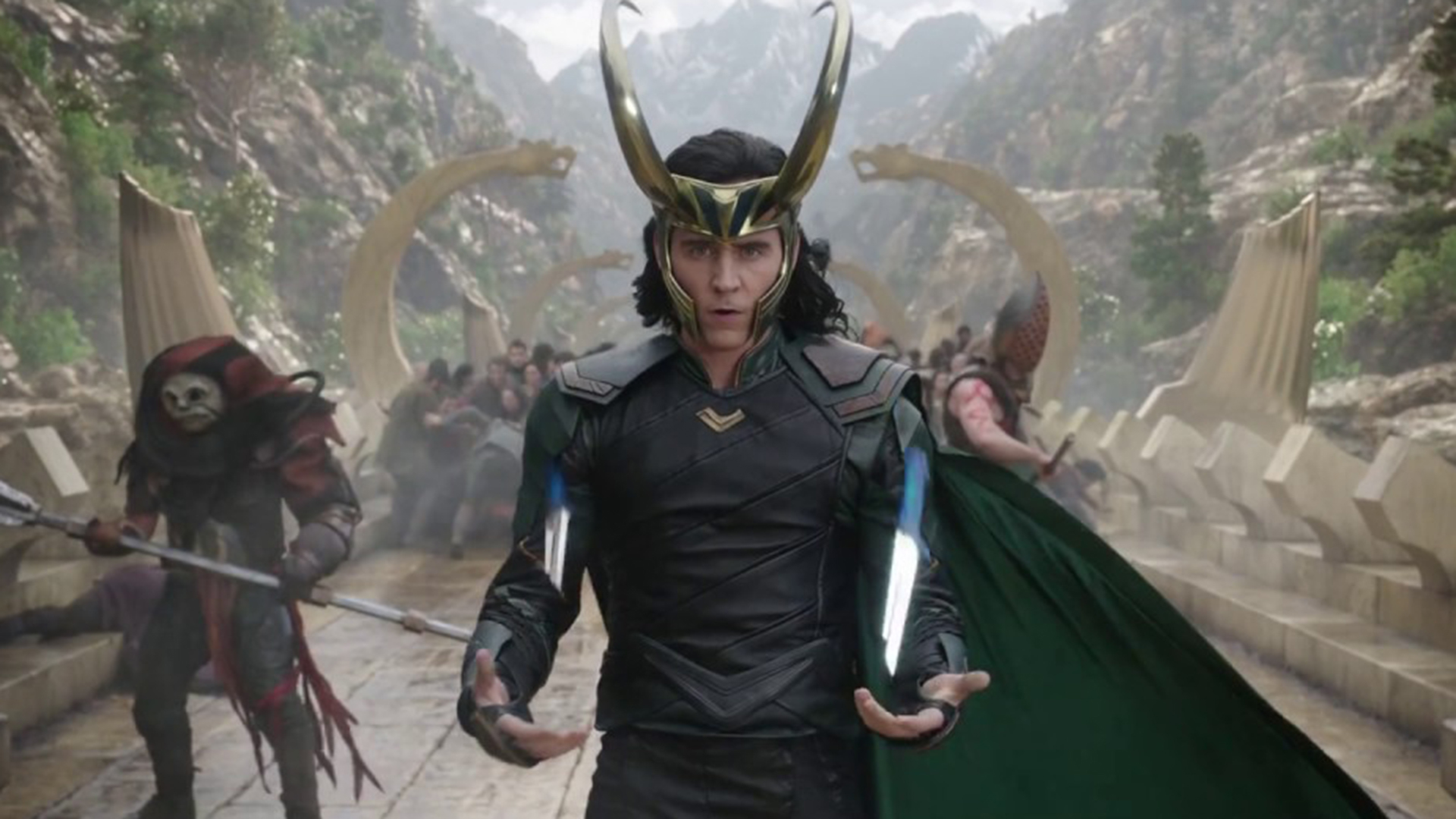
Comic Origin: Journey Into Mystery #85 (1962)
Played by Tom Hiddleston
Anyone who said Marvel had a villain problem before Thanos was clearly forgetting about Loki. Thor’s adoptive brother was a scene-stealer from the moment we first laid eyes on him in Asgard, and the trickster god has been one of the MCU’s MVPs for the best part of a decade.
Thor director Kenneth Branagh obviously spotted something mischievous in his Wallander co-star, because Tom Hiddleston has made a habit of upstaging Marvel’s title characters. If you want proof of Loki’s sheer charisma, remember this is a guy who can wear a hat with two massive horns, and make it look good.
Part of Loki’s appeal is that you’re never sure who he is, whether he’s with you or against you. Motivated initially by jealousy of his brother, Loki’s subsequently driven by revenge, and the sort of over-developed ego you need if you’re going to hire Matt Damon to play you in the story of your life.
But along the way, he’s evolved from all-out baddie into more of an antihero. While you’d never trust him with your life (or even a tenner), he finds a degree of nobility when he dies standing up to Thanos in Avengers: Infinity War – though it’s a measure of the man that, right to the end, you never quite know which side he’s on.
Thanks to the timeline-hopping shenanigans of Avengers: Endgame, Loki lives to fight again via adventures that may well form the basis of his upcoming Disney+ TV show. He also wins bonus points for being (as far as we’re aware) the only villain ever to say “mewling quim” in a mainstream Hollywood movie.
Most Dastardly Moment: Using the Tesseract to open the wormhole that allows Chitauri armies to invade New York.
Killer One-Liner: “Freedom is life’s great lie. Once you accept that, in your heart… you will know peace.”
3. Killmonger, Black Panther, 2018
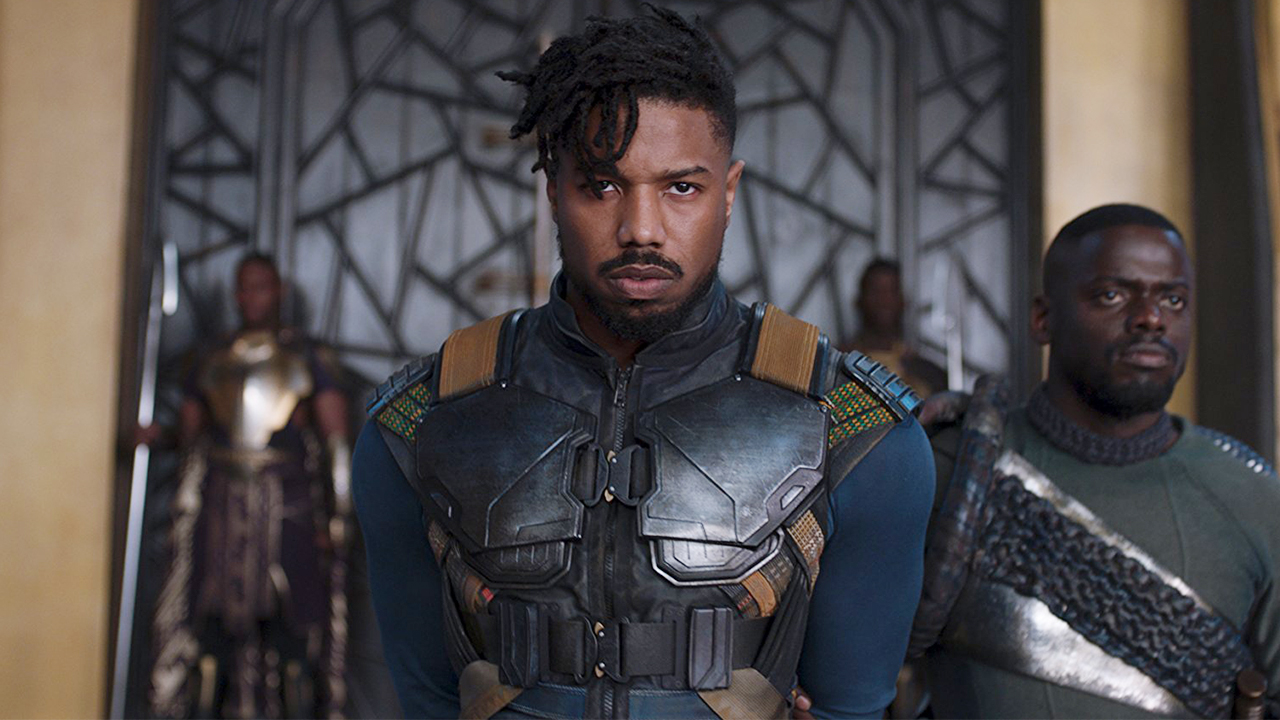
Comic origin: Jungle Action Vol. 2 #6 (1973)
Played by Michael B. Jordan
The best movie villains are charismatic and have motives that you can relate to. Erik ‘Killmonger’ Stevens pushes this idea to its absolute limit, and really tested audiences’ loyalties.
Scarred inside and out, Killmonger is no one-note baddie. As co-writer Joe Robert Cole notes, he has a “point of view that’s relatable”, until his actions are not. “Sometimes it’s how far you take things that makes you a villain, and not necessarily the perspective.” Like another Erik (Lehnsherr, aka Magneto), Killmonger is a man forged in trauma and driven by legitimate grievances. The son of Wakandan royalty, he was raised in America, where he suffered the effects of racial oppression and Wakandan law after his father was killed. Erik’s vengefulness was weaponised in the military, shaping him as the bristling embodiment – a radical twist, this – of US domestic and foreign policy with the brands to show for it.
Up to here, he’s a thrilling villain because he mirrors and challenges T’Challa’s self-certainty on strong grounds. Physically, he defeats T’Challa with the brutalist precision of Bane on Batman; ideologically, he dismantles T’Challa’s faith in Wakandan isolationism.
But he also wants to arm the oppressed to kill those in power – “and their children”. Cole’s “how far you take things” comes into play as Killmonger’s righteous convictions cave to a desire for power, manifested in murderous, often misogynist ways. Against this backdrop, it’s a credit to Cole and Ryan Coogler’s meticulous characterisation that his death impacts as tragedy, aided by the charismatic swagger and soul in Michael B. Jordan’s performance. For Jordan, the toll of playing him went deep: “When it was all over, I think just being in that kind of mind state… it caught up with me.” For the MCU, he set a standard that won’t be easily outstripped.
Most Dastardly Moment: Slitting the throat of Dora Milaje member Xoliswa. Too far…
Killer One-Liner: “When I say you do something, I mean that shit.”
2. Thanos, Avengers: Infinity War, 2018; Avengers: Endgame, 2019
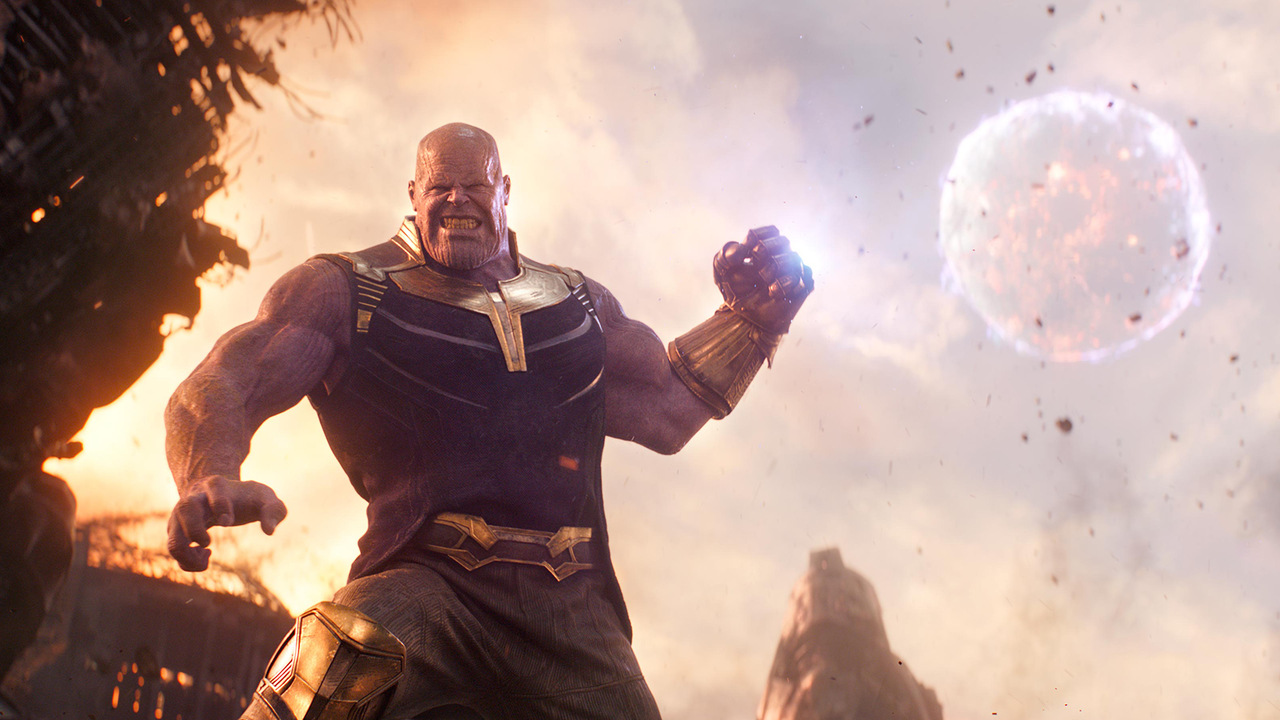
Comic origin: The Invincible Iron Man #55 (1973)
Played by Josh Brolin
The MCU spent a decade building towards the arrival of Thanos, and the results did not disappoint. Despite facing the might of the (divided) Avengers, the mad Titan achieved a unique result among comic-book villains – he won. Powering the full-throttle plot and snatching the bulk of the screentime, Infinity War is Thanos’ film from first to final frame. Combined with his (somewhat) sympathetic motivations, and refreshingly philosophical disposition, Thanos will be the Marvel villain to beat for years to come.
Proto-appearances in two Avengers post-credits scenes, as well as an extended cameo in Guardians Of The Galaxy, feel like early drafts in retrospect. But Thanos makes a major impression within minutes of Infinity War’s chilling opening sequence, thrashing the Hulk with intimidating ease, impaling Heimdall and choking the life out of Loki. With a single Infinity Stone in his gauntlet, he’s a one-man army. With a full set by the film’s climax, he’s the greatest threat the universe has ever seen.
Performed with Shakespearian relish by Josh Brolin in mo-cap pyjamas, and brought to the screen with some of the most accomplished character FX since Avatar, Thanos is a rare CG character that doesn’t once slip into the uncanny valley. This allows for an impressively nuanced performance, particularly in scenes with his daughter Gamora, that humanise the giant purple space bastard.
Out of necessity, Thanos takes a backseat to the outgoing A-Team in Endgame, and the drastic reduction in screentime (along with a reverse time jump) comes with a consequence – his measured confidence replaced by slightly more generic anger issues. But he still manages to surprise in the film’s epic final battle, simultaneously going toe-to-toe with Iron Man, Thor and a Mjölnir-tossing Captain America, while his death – as Thanos sits down with the same zen calm in the face of defeat that he demonstrated in victory – is perfectly balanced, as all things should be.
Most Dastardly Moment: Wiping out half of all life in the universe with a click of his fingers.
Killer One-Liner: “You should have gone for the head.”
1. Joker, Batman movies, 1966 - 2019

The Joker has always been a wild card. One of the very first comic-book supervillains, Mistah J was created in 1940, the same year as Catwoman, Lex Luthor and Thaddeus Sivana. It’s fitting that the Joker’s origins remain obscure and contested: Bill Finger, Bob Kane and Jerry Robinson claimed various amounts of credit for his creation, and the original authorship was never entirely resolved. What isn’t disputed is that Conrad Veidt’s perma-grinning character in the 1928 film The Man Who Laughs was a key inspiration: perhaps the reason that the Joker has been such a rich vein for cinema is because it’s in his DNA.
Throughout his comic history, the Joker has covered the spectrum from sinister crime kingpin to goofy trickster, sometimes blurring the line between the two. This mercurial presentation has been reflected in his on-screen appearances, where he’s varied from a loveable jester to a psychotic madman. Cesar Romero’s cackling buffoon in the ’60s TV series was the first Joker on the small (then big) screen. The impact of Romero’s transformation was lessened by his still-visible moustache, but he gamely laughed it up within the campy context, and offered proof of the character’s screen suitability. The make-up, the purple suit, the bag of tricks… the Clown Prince of Crime is unmistakeable.
What truly made the Joker an icon of villainy, though, was Jack Nicholson’s portrayal in 1989’s Batman, the film that would change the way comic-book movies were perceived. Not only did Nicholson nab top billing over Michael Keaton, he also negotiated taking a cut of the box office and merchandise – to the tune of a reported $50m, the highest actor payday of its time. It’s a scheme that the Ace of Knaves himself would have smiled at.
Batman ’89 also established the most commonly used origin story for the Joker: the hoodlum (here named Jack Napier) who falls into a vat of toxic chemicals and survives, eerily disfigured. Nicholson’s own lupine smile and deep laugh lines were extended with prosthetics. “I saw my job as very much, whatever this guy turns up with, I’ll be augmenting,” said make-up designer Nick Dudman. This Joker used all the clowny paraphernalia (handshake-shocker, flower-squirter), and played up the character’s wit, but there was still a pervading element of menace in his methods (not least the poisonous ‘Smylex’ that left its victims dead, with rictus grins to match the Joker’s).
It was a performance of such megawatt star power that the role would be considered untouchable for years. But on the small screen, Mark Hamill turned the Joker into a signature performance second only to Luke Skywalker. Animation allowed the Joker to exist in a state matching his heightened physicality – “He seemed to be all teeth,” says Hamill – with a manic screechy voice so fitting that Hamill would reprise it in various series and videogames, plus features Mask Of The Phantasm and The Killing Joke. Hamill gave the Joker a maniacal laugh for every mood. “I had so much fun doing that character because he’s insane, and if you’re insane, you’re unpredictable, and if you’re unpredictable, you’re never boring,” he says.
The Joker didn’t appear on the big screen again until 2008, but his unpredictability was never more keenly felt than in The Dark Knight, and Heath Ledger’s Oscar-winning tour de force would become the definitive screen version of the character. Ledger’s Joker still sported the iconic accoutrements, albeit in a way that gelled with the reality-grounded aesthetic of Christopher Nolan’s Gotham. The lanky hair was a darker shade of green, the greasepaint haphazardly slopped on his face, but he was still very much the Joker.
Again, the voice proved a crucial way into the character, wavering from high-pitched shrieks of laughter to a deep rumbling burr. And Ledger’s Joker felt like a truly unpredictable agent of chaos in a way that screen villains rarely have, before or since. “On set, there were always moments like that clapping or things he would do with his voice… You never knew what that guy was going to do, and that’s what was terrifying about him,” says Nolan. This was a bad guy for a new era, and the character has since become a beacon for awards-lauded actors, and a benchmark for comic-book intensity.
Given the current state of flux in the DCEU, it’s unknown as to whether Jared Leto’s heavily tattooed gangster J will ever reappear. But the Joker’s adaptability was demonstrated again in The Lego Batman Movie, a fanged but kiddie-friendly take that still retained the character’s essence, despite the more overtly comical tone. For one thing, the Joker’s always one step ahead. And there’s the essential duality of Batman and the Joker (“Who else drives you to one-up them the way I do?”) that feeds into what makes the Joker the greatest comic-book movie villain: the yin-yang dynamic between protagonist and antagonist. Order versus chaos. Black versus white. (And purple. And green.)
Now Joker is about to get another interpretation, courtesy of Joaquin Phoenix in Todd Phillips’ origin story that deviates from established comic lore. While there are shades of graphic novel The Killing Joke (Phoenix’s Arthur Fleck is a failed comic), this is set to take the character in a very different direction, as DC’s movie universe takes ever bolder risks.
But as the Joker himself said, “If I’m going to have a past, I prefer it to be multiple choice.” This elusive, changeable backstory has only added to the Joker’s mystique. Don’t expect Phoenix’s turn to put a full stop on the character. The Joker’s destined to put a smile on the faces of movie audiences forever.
Most Dastardly Moment: Telling Batman the whereabouts of his love Rachel Dawes and Gotham’s ‘White Knight’, Harvey Dent, but only giving him time to save one of them…
Killer One-Liner: “Why so serious?”
If you’re a fan of Total Film, who created this feature, why not subscribe so that you never miss an issue, and you’ll get exclusive subscriber-only covers delivered directly to your doormat before the magazine hits shelves? What are you waiting for?
We’re currently running a subscription offer where you can subscribe from as little as £12.25 every three months, and you’ll also get five blockbuster movies to run from Rakuten TV (which you can watch on any supported device including Smart TVs, consoles, tablets, smartphones and more). Head to My Favourite Magazines now to take advantage of the offer. (Ts and Cs apply).
The Total Film team are made up of the finest minds in all of film journalism. They are: Editor Jane Crowther, Deputy Editor Matt Maytum, Reviews Ed Matthew Leyland, News Editor Jordan Farley, and Online Editor Emily Murray. Expect exclusive news, reviews, features, and more from the team behind the smarter movie magazine.


